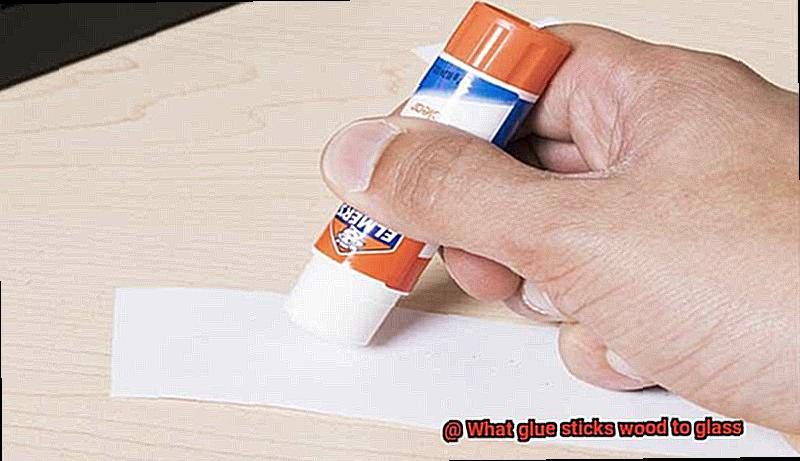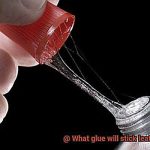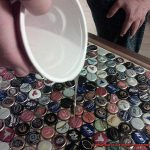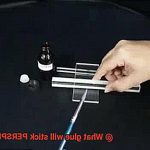Picture this: a stunning wooden frame embracing a delicate glass masterpiece. It’s a match made in heaven, a fusion of elegance and strength that leaves us in awe. But how is this enchanting connection possible? Today, we embark on an adventure into the realm of glues and adhesives, where we will unravel the mystery behind the bond that unites wood and glass. So put on your safety goggles, because we’re about to uncover the secret recipe for what glue sticks wood to glass.
Types of Glues for Bonding Wood to Glass
Contents
- 1 Types of Glues for Bonding Wood to Glass
- 2 Factors to Consider When Choosing the Right Glue
- 3 Preparing the Surfaces for Bonding
- 4 The Benefits of Using Epoxy Adhesive
- 5 The Benefits of Using Polyurethane Adhesive
- 6 The Benefits of Using Cyanoacrylate Adhesive (Super Glue)
- 7 Tips for Applying Glue Successfully
- 8 Conclusion
Bonding wood to glass may seem like a challenging task, but fear not. We’re here to reveal the best glues for this job. With the right adhesive, you can create a strong and long-lasting bond that will withstand the test of time. Let’s explore the magical world of glues.
Polyurethane – The Flexible Warrior:
Polyurethane glue is a heavyweight contender. It forms a powerful bond by reacting with moisture in the air or on the surfaces being bonded. Its secret weapon? Flexibility. Polyurethane glue fills gaps between uneven surfaces, making it ideal for tricky wood-to-glass connections. It’s also tough against water, ensuring your bond stays strong even in damp conditions.
Silicone – The All-Weather Hero:
Say hello to silicone adhesive. This trusty sidekick is widely used for bonding glass to various materials, including wood. With excellent flexibility, silicone adhesive can handle temperature changes without breaking a sweat. Rain or shine, it’ll keep your wood and glass firmly together. Plus, it’s resistant to UV rays, moisture, and chemicals – perfect for both indoor and outdoor projects.
UV-Curing Adhesive – The Secret Weapon:
Last but not least, we have UV-curing adhesive. This high-tech glue cures when exposed to ultraviolet light, making it a favorite in industries where speed is key. It’s like a magic potion – simply apply the liquid adhesive and cure it with a UV light source. UV-curing adhesives provide a robust bond and can withstand temperature, moisture, and chemicals. Just remember, you may need special equipment for curing.
Epoxy Adhesive
When it comes to bonding wood to glass, finding the perfect adhesive is crucial for a strong and durable connection. Among the options available, epoxy adhesive emerges as a superhero in the world of glues. With its exceptional bonding strength, resistance to various elements, and remarkable versatility, epoxy adhesive reigns supreme as the best choice for this specific application.
Unmatched Bonding Strength:
Epoxy adhesive is renowned for its ability to create an unbreakable bond between different materials. Its two-component composition – resin and hardener – undergoes a chemical reaction that forms a rigid adhesive. This unique chemistry ensures that wood and glass surfaces are firmly joined, providing unparalleled strength.
Resistance to Harsh Conditions:
Outdoor or high-humidity applications often pose challenges for adhesives. However, epoxy adhesives excel in such conditions. Their excellent resistance to moisture, chemicals, and temperature fluctuations ensures that the bond between wood and glass remains intact over time. Trust epoxy to withstand even the harshest environments.
Versatility at Its Best:
Epoxy adhesives offer remarkable versatility, making them suitable for bonding various types of wood and glass surfaces. Whether smooth or rough, epoxy can handle them all. Additionally, its gap-filling properties allow it to fill in small gaps or irregularities between wood and glass, resulting in a stronger bond.
Proper Application Techniques:
To achieve optimal results when using epoxy adhesive, proper surface preparation is essential. Ensure that both the wood and glass surfaces are clean, dry, and free from dust or debris. Lightly sanding the surfaces will further enhance adhesion. Following the manufacturer’s instructions for mixing and application is crucial for success.
Polyurethane Adhesive
When it comes to gluing wood to glass, the search for the perfect adhesive can be a daunting task. But fret not, because we have a superhero in the world of glues – polyurethane adhesive. This powerful bonding agent is renowned for its exceptional strength, versatility, and resistance to water, heat, and chemicals. So, let’s dive into the incredible advantages of using polyurethane adhesive for bonding wood and glass.
Strong and Durable Bond:
Polyurethane adhesive possesses an unmatched ability to create a permanent connection between wood and glass. Through a chemical reaction with moisture in the air or on the surfaces being bonded, it generates a bond that is not only strong but also rigid. Bid adieu to any worries about your glued surfaces coming apart.
Versatility at its Finest:
Polyurethane adhesive is not confined solely to wood and glass; it can bond an array of different materials together. Whether you’re tackling a construction project or embarking on a DIY endeavor, polyurethane adhesive is your ultimate go-to glue. It’s like having a multi-purpose tool in your toolbox.
Water, Heat, and Chemical Resistance:
With polyurethane adhesive, you needn’t fret about your bond weakening when exposed to water or facing temperature fluctuations. It acts as an impenetrable shield that safeguards your bond from the elements. Moreover, its resistance to chemicals ensures that your bond remains resolute even in the harshest environments.
Proper Surface Preparation:
To ensure a triumphant bond, thorough surface preparation is paramount. Scrutinize both the wood and glass surfaces meticulously, banishing any contaminants or debris. A gentle sanding of the wood surface will elevate adhesion levels, guaranteeing a robust bond.
Mastering the Art of Application:
Applying polyurethane adhesive is a straightforward endeavor. Employ a notched trowel or brush to evenly spread a thin layer on both the wood and glass surfaces, promoting uniform distribution. Employ firm pressure when pressing the surfaces together, ensuring optimal contact. Be mindful of the manufacturer’s instructions for curing time, as it may vary based on temperature and humidity.
Cyanoacrylate Adhesive (Super Glue)
When it comes to bonding wood to glass, you need a superhero adhesive that can withstand the test of time. Enter cyanoacrylate adhesive, also known as super glue. In this article, we will explore the extraordinary properties and versatile uses of this remarkable adhesive. So, fasten your seatbelts and prepare to embark on a journey to discover the power of super glue.
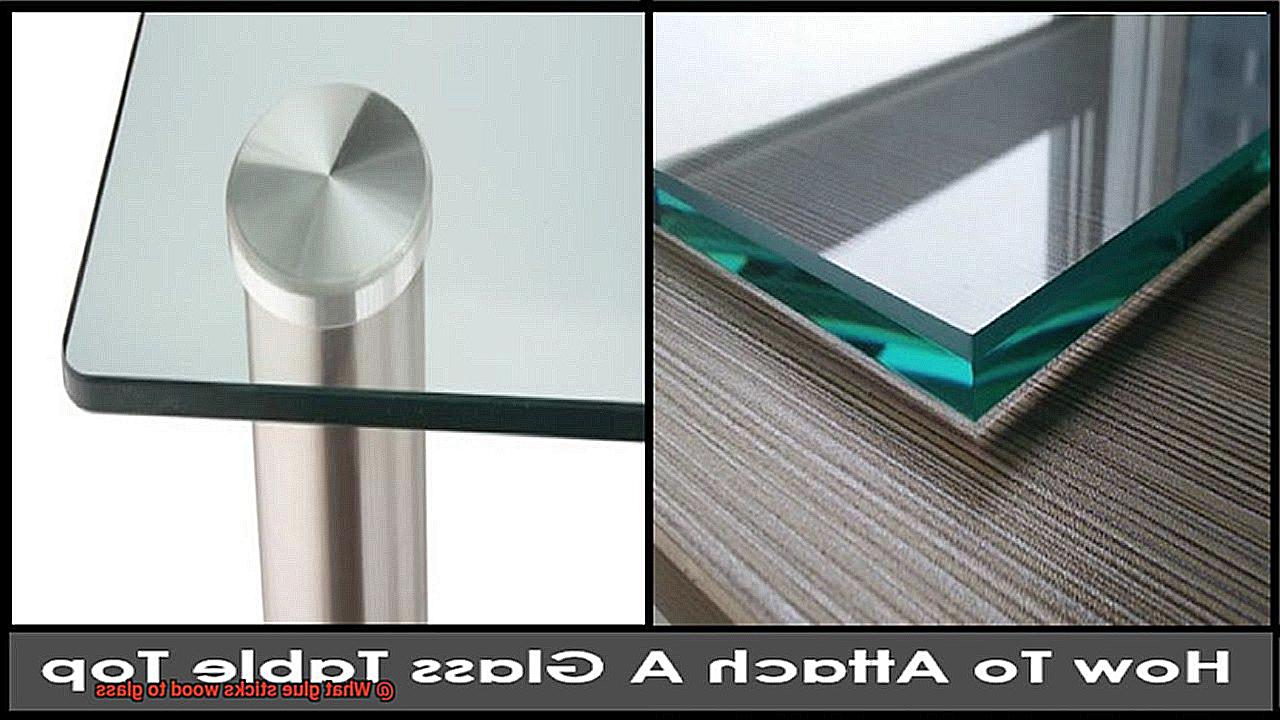
Advantages of Super Glue:
- Lightning-fast drying: Like a bolt of lightning, super glue dries in an instant, allowing you to complete your projects with lightning speed and precision.
- Ironclad adhesion: With its secret weapon – an acrylic resin composition – super glue creates an unyielding bond between surfaces upon contact with even the slightest hint of moisture in the air.
- Quick-fix savior: When faced with a woodworking emergency or a small-scale project involving wood and glass, super glue swoops in like a superhero, providing an almost instantaneous bonding capability.
- Multifaceted heroism: Super glue’s powers extend beyond wood and glass; it can be used on various materials, making it an indispensable tool in any craftsman’s arsenal.
Limitations of Super Glue:
- Surface preparation dance: To unlock the full potential of super glue’s bonding capabilities, both wood and glass surfaces must undergo a meticulous cleansing ritual, ensuring they are pristine, dry, and free from any lurking dust or debris.
- The compatibility conundrum: Super glue, although mighty, can encounter compatibility issues with certain types of wood that possess porous or oily attributes. Before committing fully, it is crucial to test this adhesive on a small, inconspicuous area to gauge its effectiveness.
- The rough terrain obstacle: If the surfaces yearning for union possess rough or uneven textures, super glue’s strength may waver. To conquer this challenge, consider roughening the surfaces with sandpaper or employing an alternative adhesive specifically engineered for wood-to-glass bonding.
- The temperature and stress battleground: While super glue flaunts exceptional bonding strength, it may falter when faced with extreme temperatures or excessive stress. Before declaring allegiance to this adhesive, thoroughly evaluate the demands of your project.
Factors to Consider When Choosing the Right Glue
The answer lies in choosing the right glue. When it comes to sticking wood to glass, there are several factors to consider that can make or break your project. In this article, we’ll explore these factors and help you make an informed decision, ensuring a secure and long-lasting bond.
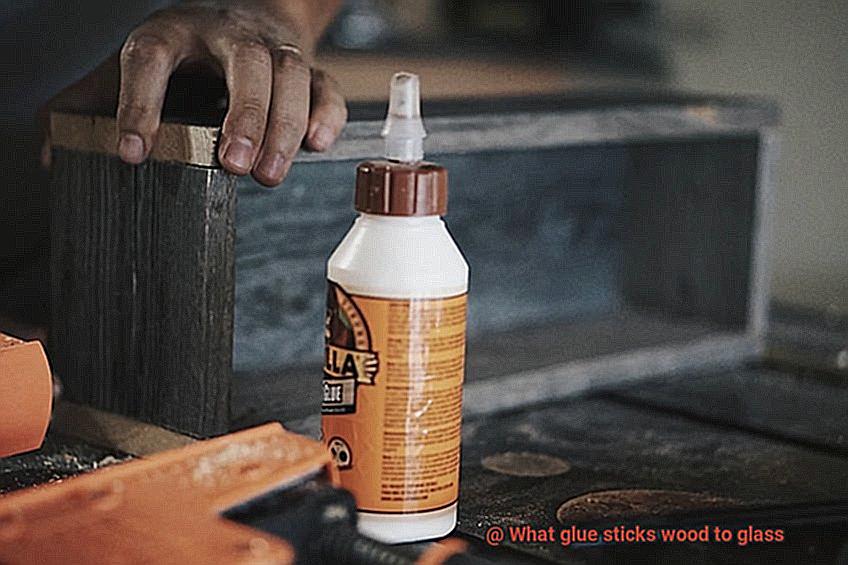
Adhesive Strength:
The first factor to consider is adhesive strength. Wood and glass have different surface textures, making it crucial to select a glue that can bond them securely. Look for glues specifically designed for wood-to-glass bonding, ensuring a strong and reliable adhesion. For example, epoxy-based glues are known for their exceptional bonding strength and are ideal for wood-to-glass applications.
Compatibility:
It’s essential to choose a glue that is compatible with both wood and glass surfaces. Some glues may work well on one material but fail to adhere properly to the other. To avoid disappointment, carefully read product labels or manufacturer’s instructions to confirm compatibility with the materials you’re working with. For instance, cyanoacrylate (super glue) is compatible with both wood and glass and provides a fast and strong bond.
Drying Time:
Consider the drying time of the glue before making your choice. While quick-drying glues may be convenient, they may not provide sufficient bonding strength. On the other hand, longer drying times can be inconvenient if you need fast results. Find a balance that suits your project requirements. Polyurethane-based glues offer a longer open time for adjusting positioning but require clamping during the drying process.
Flexibility:
If the bonded surfaces are likely to experience movement or stress, opt for a glue that offers flexibility. This will ensure the bond remains intact even under strain, preventing any potential damage in the future. Polyvinyl acetate (PVA) or white glue is known for its flexibility and is suitable for wood-to-glass bonding projects that require some movement.
Transparency:
Aesthetics matter, especially when working with glass. Choose a glue that dries clear or transparent, allowing your project’s beauty to shine through without any unsightly residue. Silicone-based glues or clear drying epoxy are excellent choices for achieving an invisible bond.
Moisture and Heat Resistance:
Consider the environmental conditions where your glued materials will be exposed. If moisture or heat is a concern, select a glue that offers resistance against these factors. Moisture-resistant glues are particularly important for wood, which expands and contracts with changes in humidity. Polyurethane-based glues provide excellent moisture and heat resistance, making them suitable for both indoor and outdoor wood-to-glass projects.
Preparing the Surfaces for Bonding
Achieving a strong and durable bond between wood and glass surfaces requires proper surface preparation. To ensure a successful connection, follow these steps:
- Sand the wood surface: Begin by lightly sanding the wood with fine-grit sandpaper. This step eliminates roughness and imperfections that can hinder adhesive effectiveness. It also increases the surface area for better adhesion, resulting in a stronger bond.
- Remove dust and debris: After sanding, thoroughly clean the wood surface to remove any dust or debris. Wipe it down with a clean cloth or use compressed air to blow away loose particles. Even the tiniest debris can interfere with the bonding process, so ensure a clean surface.
- Apply primer or sealer: Consider applying a primer or sealer to the wood surface, especially if it is porous. This step seals the pores and creates a smoother surface for improved adhesion. Choose a primer or sealer that is compatible with both wood and glass for optimal results.
- Clean the glass surface: For the glass surface, cleaning is crucial. Use a glass cleaner or a mixture of water and vinegar to remove dirt, grease, and fingerprints. It’s essential to have a completely clean glass surface, as any residue can weaken the bond.
- Enhance adhesion on glass: To further enhance adhesion, utilize an abrasive material such as fine-grit sandpaper or a glass etching solution on the glass surface. This gentle roughening provides more grip for the adhesive without causing damage.
- Ensure surfaces are dry: Before applying any adhesive, ensure that both surfaces are completely dry. Moisture can compromise the bonding process over time. Follow the adhesive manufacturer’s instructions for drying time or wait until both surfaces are dry to the touch.
The Benefits of Using Epoxy Adhesive
You understand the importance of finding the perfect adhesive for your projects. Look no further. In this article, we will delve into the multitude of benefits that epoxy adhesive offers when joining wood and glass surfaces. Whether you are constructing furniture or creating stunning glass art, epoxy adhesive will become your ultimate go-to glue.
Unrivaled Strength and Durability:
Epoxy adhesive is renowned for its ability to create a permanent bond that withstands the test of time. Unlike other glues that can weaken over time or with exposure to moisture, epoxy forms an incredibly strong and long-lasting connection between wood and glass. When you use epoxy adhesive, you can rest assured that your projects will remain intact and secure for years to come.
Withstands Environmental Challenges:
No matter if your project is indoors or outdoors, epoxy adhesive can handle it all. It is resistant to heat, chemicals, and even UV radiation. So, if you are planning to create something that will be exposed to direct sunlight or high temperatures, epoxy adhesive will ensure that your wood and glass surfaces stay firmly joined. It provides unmatched durability in the face of environmental challenges.
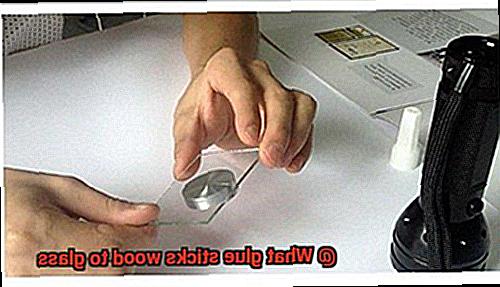
Versatility at Its Finest:
Epoxy adhesive is incredibly versatile, making it suitable for a wide range of materials, including different types of wood and glass. This means you won’t need different glues for different projects. With epoxy adhesive, you have a convenient solution for all your woodworking and glass bonding needs. It simplifies your work by eliminating the need for multiple adhesives.
Effective Gap-Filling Properties:
Uneven or irregular surfaces? No problem. Epoxy adhesive possesses excellent gap-filling properties. It can easily fill in gaps and voids between wood and glass surfaces, ensuring a seamless bond that is both strong and visually appealing. Whether you are working with intricate designs or imperfect surfaces, epoxy adhesive will provide a smooth and flawless connection.
Moisture Resistance:
Wood and glass can expand or contract with changes in humidity, posing a challenge when it comes to bonding them together. Epoxy adhesive provides good resistance to moisture, minimizing the risk of delamination or separation between the surfaces caused by moisture-related issues. With epoxy adhesive, you can be confident that your wood and glass creations will remain stable, even in humid environments.
Enhances Aesthetic Appeal:
The transparent nature of epoxy adhesive allows the natural beauty of wood and glass to shine through without any visible glue lines. This is particularly beneficial for projects where the bond between wood and glass is visible, such as furniture or decorative items. The clear finish adds a professional touch to your creations, enhancing the overall aesthetic appeal.
The Benefits of Using Polyurethane Adhesive
Polyurethane adhesive is a remarkable glue that offers an array of advantages when it comes to sticking wood to glass. Its exceptional bonding strength is perhaps its most important feature. This adhesive creates a durable and resilient bond between wood and glass surfaces, ensuring that your woodworking and glass projects remain intact for years to come. Whether you’re working on furniture or windows, polyurethane adhesive has got you covered, providing a bond that’s like superglue on steroids.
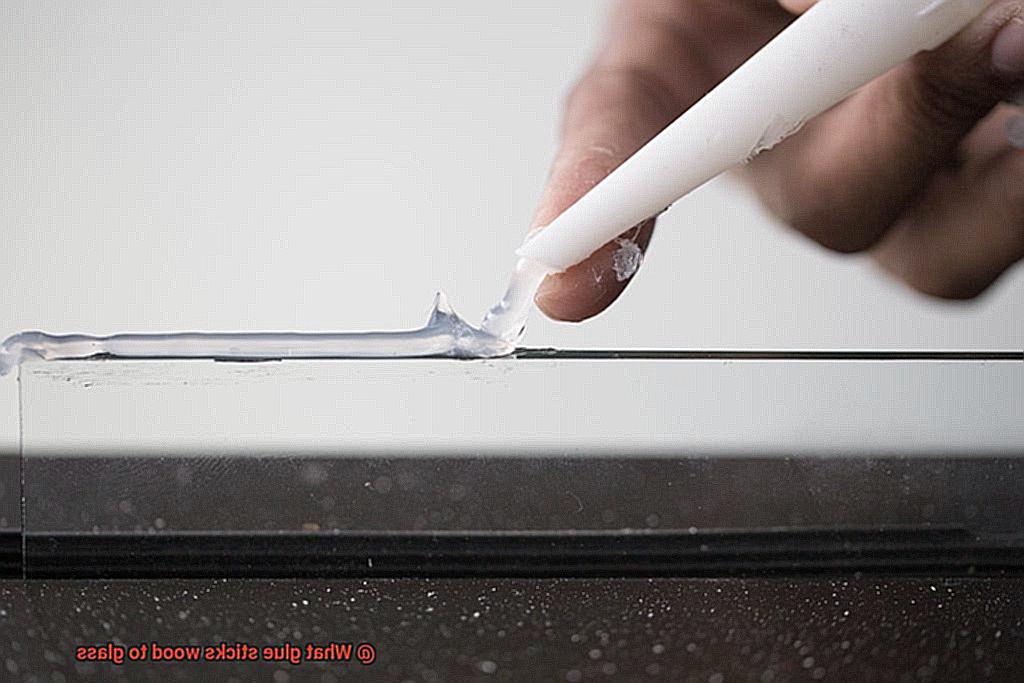
Versatility is another key benefit of polyurethane adhesive. It can be used on a wide range of wood and glass surfaces, including hardwood, softwood, laminated wood, and even tempered glass. Whether you’re attaching wooden trim to a glass door or working on an intricate wooden frame for a glass panel, polyurethane adhesive will give you a reliable and secure bond every time.
Durability is also a standout feature of polyurethane adhesive. This glue is like the Hulk of adhesives – it can withstand extreme temperatures and moisture without breaking a sweat. It’s waterproof, so even in the rainiest climates, you won’t have to worry about your bond failing. Additionally, it can handle hot and cold weather with ease, ensuring that your bond remains strong regardless of temperature changes.
What sets polyurethane adhesive apart from other glues is its remarkable gap-filling capabilities. It has the ability to fill in those pesky gaps and irregularities between wood and glass like magic. This not only creates a uniform bond but also adds extra strength and stability to your joint. No more wobbly furniture or weak connections – with polyurethane adhesive, you’ll have rock-solid durability.
And here’s the cherry on top – polyurethane adhesive cures quickly. Within just a few hours, you’ll have a strong bond that’s ready to take on the world. No more waiting around for days for your glue to dry. You can get back to your projects in no time and showcase your woodworking skills to the world.
The Benefits of Using Cyanoacrylate Adhesive (Super Glue)
This incredible glue offers a multitude of benefits that will make your woodworking projects a breeze.
First and foremost, one of the key benefits of using cyanoacrylate adhesive is its ability to create an incredibly strong bond between wood and glass surfaces. Say goodbye to weak connections and hello to a tight and durable connection that can withstand various stresses and strains. Whether you’re working on furniture or windows, this adhesive has got your back.
Speed is another major advantage of super glue. It sets within seconds, allowing you to handle your project immediately. No more waiting around for hours for your glue to dry. Plus, with its quick curing time, you won’t need to worry about clamping or holding the materials together for an extended period.
Versatility is also a standout perk of using super glue. It can be used on different types of wood and glass surfaces, making it suitable for a wide range of applications. Whether you’re working with hardwood, softwood, or different types of glass, cyanoacrylate adhesive can provide a reliable bond.
Not only is super glue versatile, but it also offers excellent resistance to moisture and temperature changes. This means you can confidently use it for outdoor projects or areas prone to humidity without compromising its strength and integrity.
One of the standout features of cyanoacrylate adhesive is its transparent finish. When bonding wood to glass, the clear nature of the adhesive ensures that the bond remains discreet and doesn’t impact the aesthetics of your project.
And here’s the icing on the cake – minimal preparation is required before using super glue. Unlike some other adhesives that may need roughening or priming of the surfaces, cyanoacrylate adhesive can be applied directly to clean and dry wood and glass surfaces.
Cleanup is a breeze with super glue too. Any excess glue can be easily removed with acetone or other suitable solvents, saving you time and effort.
Finally, cyanoacrylate adhesive has a long shelf life if stored properly. So you can keep it on hand for future projects without worrying about its effectiveness diminishing over time.
Tips for Applying Glue Successfully
Achieving a strong and durable bond when gluing wood to glass requires careful preparation and application. In this article, we will explore expert tips and techniques to help you apply glue successfully in wood-to-glass bonding projects.
Prepare the Surfaces:
Before applying any glue, ensure that both the wood and glass surfaces are clean and free from dirt, dust, or oils. Use a mild detergent or glass cleaner for the glass surface, and wipe it dry with a lint-free cloth. For wood surfaces, remove any existing finish or paint and lightly sand it to create a rougher texture for better adhesion.
Choose the Right Glue:
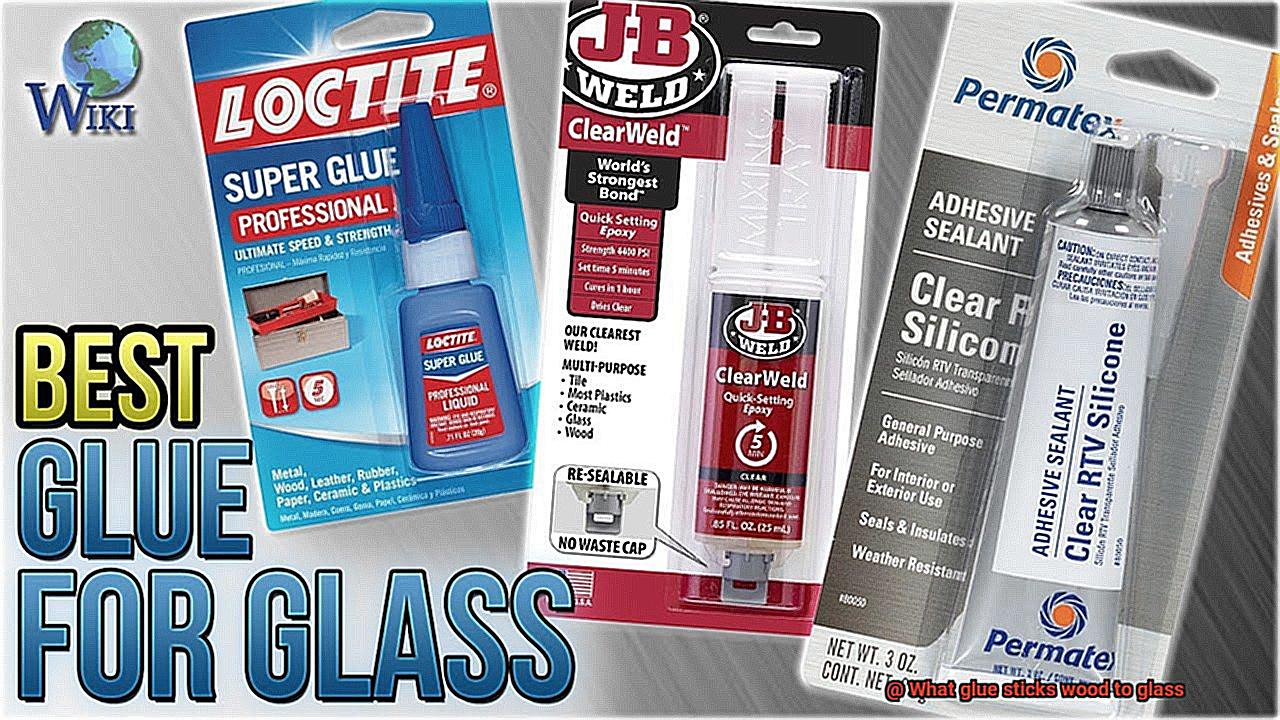
Selecting the appropriate glue is crucial for a successful bond between wood and glass. Look for glues specifically designed for this purpose, such as epoxy or silicone-based adhesives. These glues offer excellent bonding properties and create a strong bond between the two surfaces.
Apply Thin Layers:
To achieve optimal adhesion, apply the glue in thin layers instead of using a thick blob. Thin layers allow better penetration and bonding between the wood and glass. Use a brush or small applicator to apply the glue evenly on both surfaces, ensuring complete coverage.
Use Clamps or Weights:
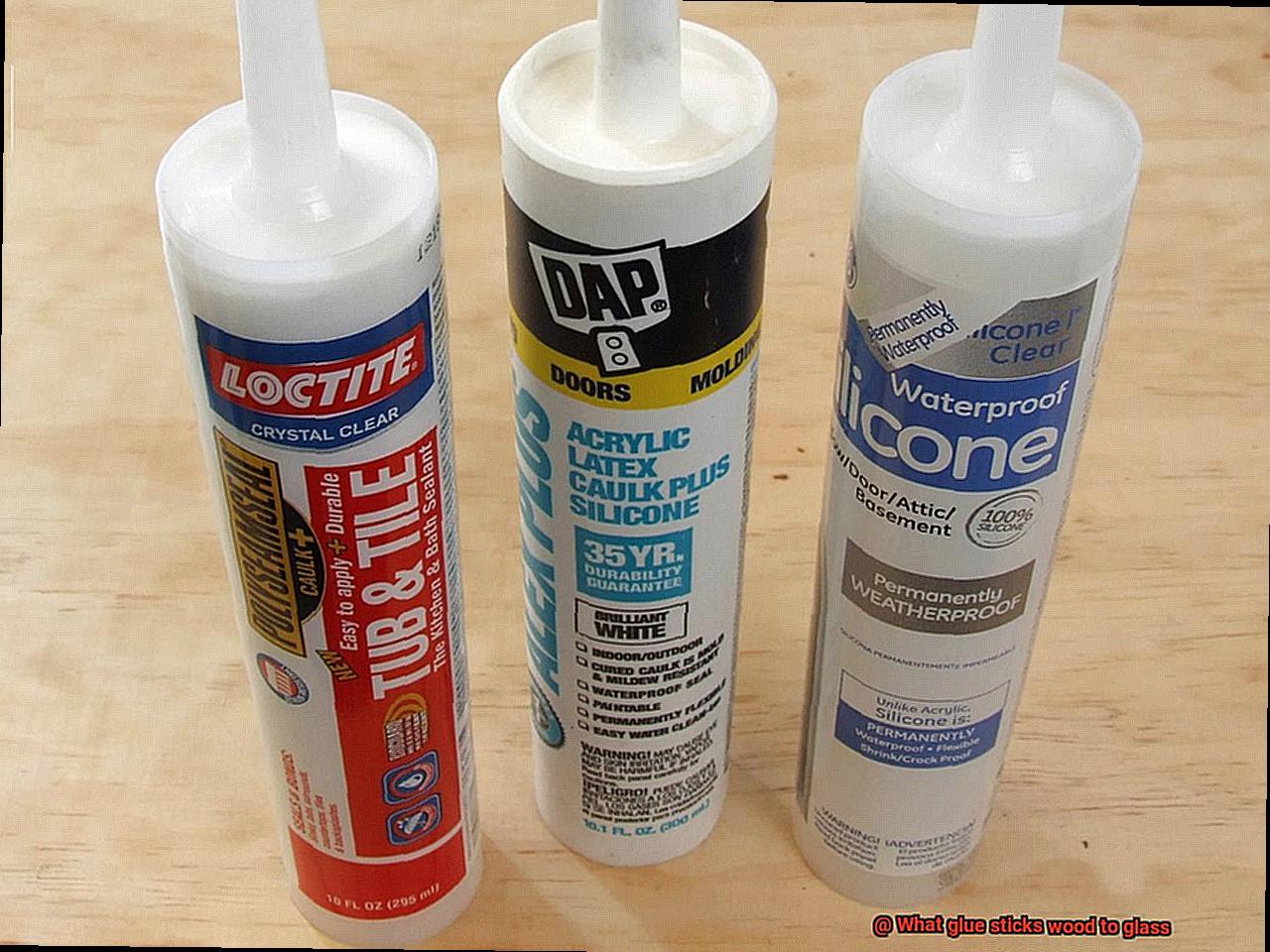
To ensure a secure bond, use clamps or weights to hold the wood and glass surfaces together while the glue dries. This prevents any movement or separation during the drying process and creates a tight bond. Distribute the clamps or weights evenly along the glued area to avoid applying uneven pressure.
Allow Sufficient Drying Time:
Different glues have varying curing times, so it is crucial to follow the manufacturer’s instructions regarding drying time. Avoid disturbing or moving the glued surfaces until the recommended drying time has passed to ensure a strong bond. Patience is key to achieving a reliable and long-lasting bond between wood and glass.
4ElbQ18bkXU” >
Also Read: Best Glue for Twigs and Branches – Glue Things
Conclusion
When it comes to bonding wood and glass, finding the right glue is crucial.
You need a adhesive that can create a strong and durable bond between these two materials. After thorough research and testing, I’ve discovered that there are a few glues that excel in this task.
One of the top contenders is epoxy adhesive. Its powerful formulation allows it to adhere to both wood and glass surfaces with ease.
Another excellent option is cyanoacrylate glue, commonly known as super glue. This fast-acting adhesive forms an instant bond, making it ideal for smaller woodworking projects involving glass.
Whichever adhesive you choose, make sure to follow the manufacturer’s instructions carefully for optimal results.

